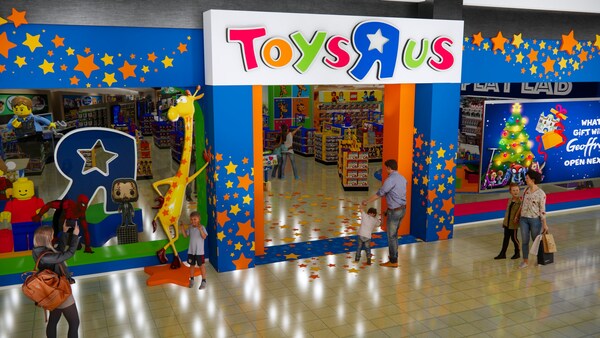
In a surprising turn of events, Toys “R” Us, the iconic toy retailer, is staging a strategic comeback with the announcement of 24 new flagship stores set to launch across the United States in 2024, following a bankruptcy declaration six years ago.
A Recap of the Past
Founded by Charles Lazarus in 1957, Toys “R” Us became a global phenomenon in toy retail. However, the legacy was shadowed by a 2017 bankruptcy filing, influenced by a debt burden of over $5 billion, culminating in the shuttering of 735 U.S. stores by June 2018.
Despite this, the brand managed to sustain international stores, notably in Canada and South Korea.
Strategic Revival by WHP Global
The brand’s revival is spearheaded by WHP Global, which acquired a controlling stake in 2021 and has since been diligent in reinvigorating the Toys “R” Us brand. With an existing global footprint in the United Kingdom, India, Dubai, and Mexico, comprising over 1,400 stores and e-commerce sites across 31 countries, WHP Global aims to broaden the brand’s appeal beyond traditional brick-and-mortar stores.
Diversified Expansion Approach
The brand’s expansion strategy includes partnerships with Go! Retail Group to integrate stores into airports and cruise ships, tapping into the burgeoning travel retail market. Yehuda Shmidman, Chairman, and CEO of WHP Global, highlighted the brand’s resilience and adaptability, with the first airport store scheduled to open in November at Dallas-Fort Worth International Airport.
“Since acquiring Toys”R”Us, we have increased our global retail footprint by more than 50% with openings in the United States, United Kingdom, India, Dubai, and Mexico. We now have over 1,400 stores and e-commerce sites across 31 countries, and as we head into 2024, we are excited to bring Toys”R”Us to consumers everywhere, whether you’re visiting one of our stores at Macy’s, at our flagships, in an airport, or onboard a cruise ship,” said Shmidman.
Go! Retail Group’s CEO, Gideon Schlessinger, shared his company’s vision to leverage its 30 years of experience to fortify the operational logistics of this iconic brand across diverse retail environments.
“As a specialty retailer and with deep roots in the toy and game industry, we are thrilled and honored to partner with WHP Global to expand the base of Toys”R”Us flagship stores,” said Schlessinger. “With over 30 years of experience in all 50 states, our focus will be to do what we do best — provide valuable brick-and-mortar logistics and operational excellence to this iconic brand.”
Analyzing the Potential and Challenges
Industry experts observe this move as a potentially contrarian strategy given the contemporary retail climate dominated by online platforms like Amazon, and big box stores like Walmart and Target.
Strengths and Opportunities:
There’s undeniable nostalgic allure to Toys “R” Us, which could draw in consumers. Moreover, the tangible experience of in-store shopping offers something unique that online platforms lack. The diversification and partnerships planned by the company are strategic moves to adapt and align with the modern retail environment and customer preferences.
Challenges and Competition:
However, competing with e-commerce giants and big box stores won’t be easy. These competitors have set high standards in terms of convenience, pricing, and variety. Toys “R” Us has to step up its game to meet these expectations and offer something distinctive to lure customers away from the convenience of online shopping and the competitive prices of its rivals.
Embracing Modern Trends:
To reclaim its market position, Toys “R” Us must marry its nostalgic charm with modern, tech-enhanced offerings to create a seamless, omnichannel retail experience. The brand needs to appeal to today’s tech-savvy, environmentally-conscious consumers by incorporating digital advancements and sustainable practices.
Brand Resilience:
Repositioning the brand to appeal to a new generation while maintaining its nostalgic essence is essential. The company must balance its legacy with contemporary market needs, evolving as a brand that is both progressive and consumer-centric.
An Uncertain, Yet Hopeful Future
The nostalgic connection of Toys “R” Us and its enduring appeal do offer a sense of optimism. The brand’s diversified expansion strategies and partnerships could potentially enable a successful re-establishment in the evolving retail scenario.
However, the journey of Toys “R” Us is closely watched by analysts, as it navigates a landscape marked by digital advancements and shifting consumer preferences. The unfolding developments will reveal whether the brand can reclaim its former glory and resonate with a new generation in this transformative era.
Its success will depend on its adaptability, strategic alignment with market trends, and its ability to resonate with contemporary consumer values and expectations. If managed wisely, focusing on innovation, sustainability, and consumer needs, Toys “R” Us’s return could set a precedent for reviving traditional retail brands in the modern digital age.
